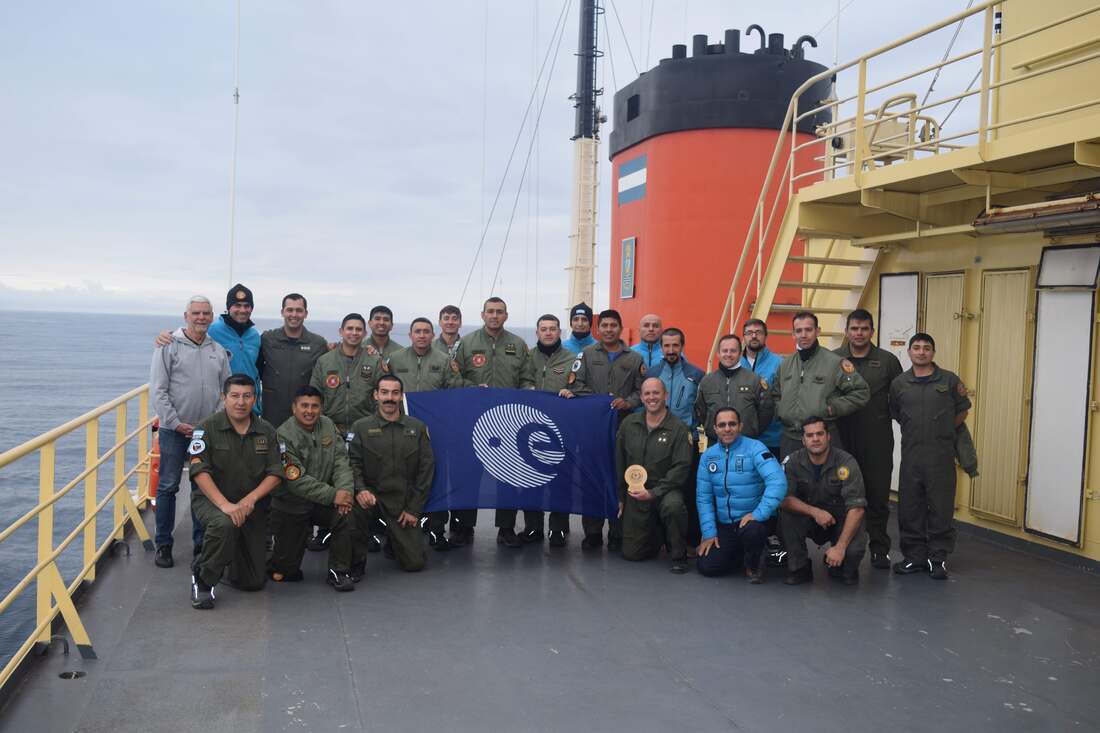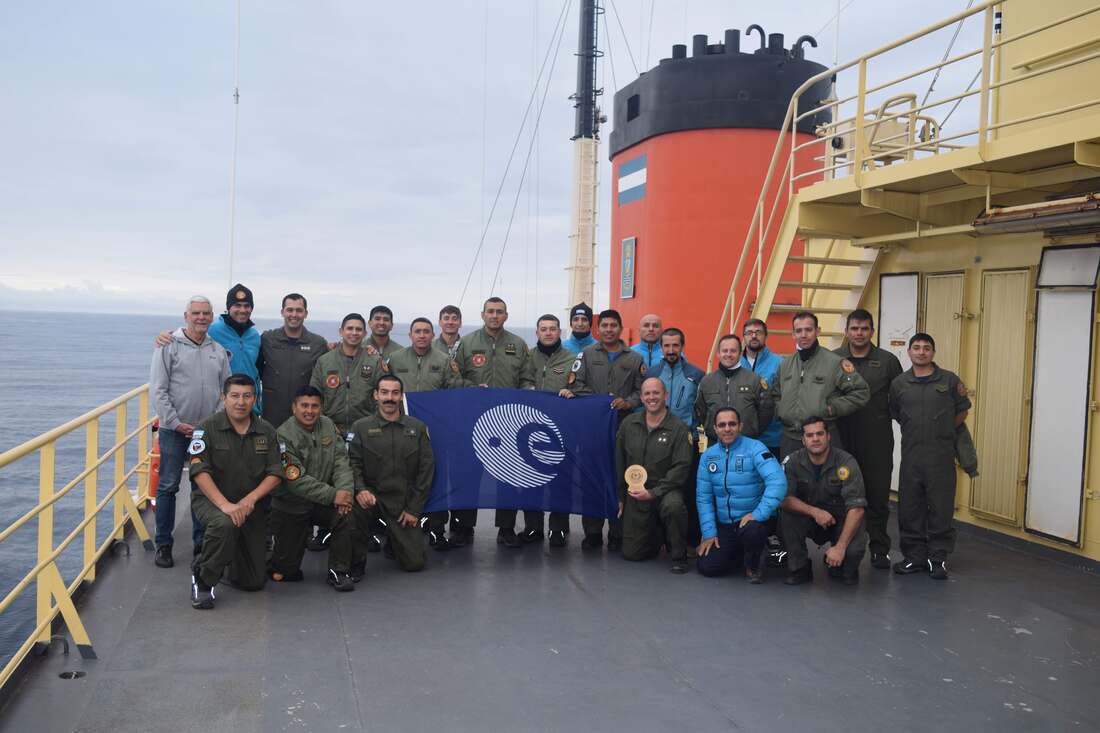FROM SPACE ANALOGUES TO PROLONGED QUARANTINES: WHAT CAN WE LEARN
By ,
8/27/2020 11:45:00 AM
Belgrano to Mars
The Antarctic continent is considered to be one of the most realistic analogues found on Earth of the situations of extreme isolation and confinement experienced in space. Since 2014, we have been conducting at the Belgrano II Argentine Antarctic Station the project "Chronobiology of Antarctic Isolation: the use of the Belgrano II Station as a model of biological desynchronization and spatial analogue", also known as “Belgrano to Mars”. The project aims to explore the impact of a year of isolation on different physiological, psychological and social variables. In particular, we are interested in studying how biological rhythms are affected by the lack of natural light during the four months of polar night typical of that latitude. The study of the chronobiological responses to extreme isolation increases our understanding of the physiological mechanisms underlying human biological rhythms, with applications in space exploration or other highly demanding professional settings, as well as in human health.
The Belgrano II Antarctic station consists of a series of scientific research facilities located approximately 1,300 km away from the South Pole at 34°S, 77°W. It is the most southerly Argentinian station and one of the three southernmost permanent stations on the planet. The temperature ranges from 5°C to 48°C below zero. One feature of this station is that, due to its latitude, it has four months of continuous sunlight, four months of twilight and four months of polar night. The station crew is composed of around 20 men. To generate a light-dark cycle during the summer, windows with blinds closed are used, in accordance with a normal sleep routine, while using eye covers during the night if necessary. Exposure to ultraviolet light is also stronger and sunglasses for external work are mandatory. Conversely, in the wintertime, the light-dark cycle depends entirely on artificial light. Schedules with well-defined times for meals (breakfast, lunch and dinner) work and rest are paramount in Antarctic stations.
?
“Belgrano to Mars” is a collaborative project in which researchers Camila Tortello and Santiago Plano (UCA-CONICET and UNQ) participate in the analysis and interpretation of the information and Juan Manuel Cuiuli (Joint Antarctic Command) in the scientific coordination between Buenos Aires and Antarctica. Other members of the project are Marta Barbarito (Argentine Antarctic Institute), Diego Golombek and Patricia Agostino (UNQ and CONICET), Agustín Folgueira and Juan Manuel López (Central Military Hospital), and Guido Simonelli (University of Montreal). Field work during isolation is carried out by physicians from the wintering crews at the station and staff members that volunteer for the study. Antarctic scientific activity is coordinated by the National Antarctic Directorate (DNA), which together with the Joint Antarctic Command, provides the logistics of the bases.

Belgrano II crew on the ARA Almirante Irízar icebreaker
Telemedicine
This year, we have traveled to Antarctica to supervise the implementation of the Belgrano to Mars project in the field, to test measurement instruments and to train the crew in the use of the equipment and software. The trip demanded six weeks of navigation in the ARA Almirante Iríza icebreaker. In addition, we started working with the
European Space Agency (ESA) in the operational test of the Telemedecine Tempus Pro equipment, under the framework of an ESA-CONAE-DNA agreement. The project, led by Dr. Víctor Demaría-Pesce, from ESA's European Astronaut Center, involves conducting operational simulations in a situation of extreme isolation and confinement, which will contribute to the design of a definitive prototype to be used by astronauts and medical teams during future space missions to the Moon and Mars. The equipment will be tested at Belgrano II (Dr. Bruno Cauda and Enf. Luis Almaraz) and Carlini (Dra. Melina D'Angelo and Enf. Gustavo Cruz) stations, through six simulations that will recreate medical scenarios similar to those encountered by astronauts in space.
 Testing the Tempus Pro telemedicine equipment at the Belgrano II Station |
Lessons to be learned from this kind of study
We have recently published in the journal
Scientific Reports (from the Nature Group) data regarding changes in the sleep-wake cycle during a winter campaign at Belgrano II. We observed that during the polar night the subjects tended to go to bed one hour later and sleep one hour less. A possible explanation is that this is due to the lack of exposure to natural light, since bright light acts as a synchronizer of our biological rhythms. This loss of sleep was somewhat compensated by naps, which were longer during that time of year.
These results show us how biological rhythms can be desynchronized in periods of prolonged confinement, such as the ones we have had to go through during the quarantine periods instituted in different countries. Moreover, it highlights the importance of exposure to natural light in the morning and darkness during the night and maintaining fixed activity and rest routines to avoid the desynchronization of our biological rhythms. Other sleep hygiene measures include the limiting of daytime naps to 30 minutes, regularly exercising (it may be necessary to avoid working out before bedtime), having a light dinner, avoiding stimulants like
caffeine and nicotine close to bedtime, and making sure that the
sleep environment is dark, silent and with a pleasant temperature. The beneficial effects of having good sleep relate to an increase in alertness during the day, the prevention of anxiety or depression, and the improvement of our general health, which in turn will reduce the chances of becoming ill.
https://www.innovaspace.org/blog/from-space-analogues-to-prolonged-quarantines-what-can-we-learn
